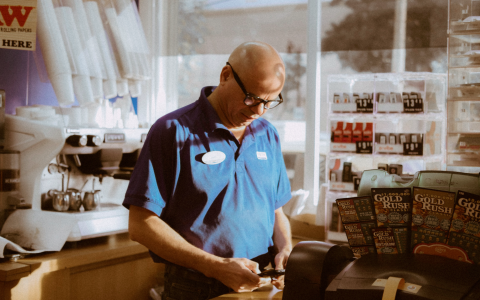
(PlanSponsor) - Retirement account balances were up in Q4 and participants continued to defer into retirement plans despite higher costs due to inflation and market uncertainty, according to Fidelity Investments’ data released Thursday.
The average 401(k) account balance increased to $103,900 in Q4, up 7% from Q3 2022. It was, however, well below the average balance of $135,600 in Q4 2021, before the market declines of last year.
The average 403(b) account balance increased to $92,683, up 6% from last quarter, according to Fidelity, though below the $115,100 average of Q4 2021.
The total savings rate for the fourth quarter, which reflects a combination of employer and employee 401(k) contributions, was 13.7%, holding steady from 13.8% in Q3 2022 and 13.9% in Q2 2022. While pre-retirement Boomers saved at the highest levels (16.5%), Gen Z savers were fairly consistent at 10.2% (versus 10.3% last quarter), according to the data.
Fidelity’s Q4 analysis examined savings behaviors and account balances for 43.4 million 401(k), 403(b) and IRA, accounts.
The data also shows that Generation Z is taking saving for retirement into its own hands, according to the latest data from 10s of millions of retirement plan participants in Fidelity Investments accounts.
Fidelity’s Q4 analysis of savings behaviors and account balances for 43.4 million 401(k), 403(b) and IRA, accounts shows that the average balance for Gen Z savers (born 1997-2012), who as a group are who are heavily invested in target date funds, increased 23% quarter-to-quarter, the highest of any other group.
In addition, Fidelity saw from Gen Z a 71% increase in IRA accounts opened mostly via workplace paycheck deferral as compared to Q4 2021. That growth figure is large as it is in part from a small base, but it’s also a new environment in terms of financial awareness and accessible technology, says Rita Assaf, vice president of retirement and college products for Fidelity.
“Just because they are eligible and interested does not mean they have to open up a Roth IRA,” Assaf says. “Interest by younger groups [in IRA savings] has been happening for the last couple of years because of the environment; this crowd, or segments of it have had access to workplace plans at much younger ages than other generations, and there has been a lot done by workplaces to provide education and overall financial wellness awareness.”
Young and Wild (About Finance)
Assaf says the proliferation of financial advice and discussion on social media is also likely contributing to Gen Z getting out of the gates strong with saving habits.
“You’re seeing so much more on social media of discussions of financial topics,” she says. “They are saying ‘I’m more interested in my financial well-being.’”
In the past, setting up an IRA meant walking into a branch and working with someone, Assaf points out. Now, IRAs can be started over a phone-based app in a matter of minutes. Fidelity has leaned into this technology with a no-fee brokerage account for teens that it opened in 2021, as well as Fidelity Bloom, an app that allows users to keep separate accounts for spending and saving.
The competition is growing, however, with app-based IRAs drawing the attention of Silicon Valley. Robinhood Financial, which made its name for stock trading during the pandemic, announced an online IRA with a 1% match in December. A venture-backed startup, Lilly Funds, came out in November with an app-based IRA that rewards savers with cash back and shopping rewards, and just this week new app-based 401(k) Arnie is offering users issue-based investing options that can put money toward—or avoid—certain companies or sectors.
By Noah Zuss
February 23, 2023



